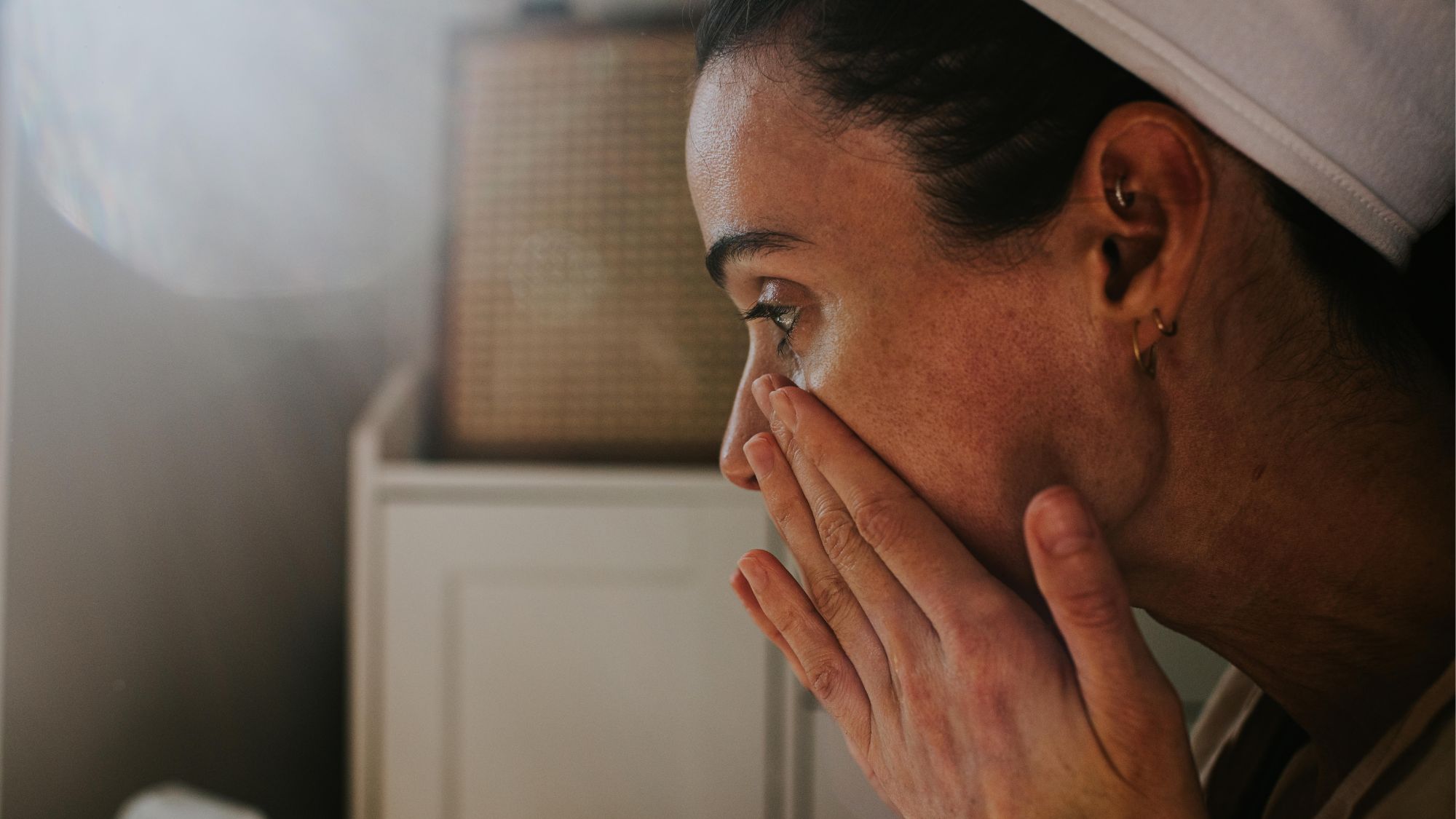No, phenol peels aren't the holy grail beauty treatment social media would have you believe they are—here's why
The treatment requires sedation and cardiac monitoring

TikTok is full of weird and wonderful beauty tricks and trends, but one treatment I'm seeing pique people's interest more is the phenol peel. Worryingly, interest from a younger demographic due to its dramatic before and after results. A phenol peel is definitely what you would class as a high-risk, high-reward treatment—not something to be done on a whim.
Due to the intensity of this peel, the process of it is very different to other, more gentle, peels and not everyone is a candidate to have it. Although social media has led us to believe everyone and their mother are getting phenol peels, that's not the case. In fact, not many people are the right fit for this treatment as it's not to be done lightly. The process can impact your heart health and the recovery is intense. In addition to that, it's actually only appropriate for one skin tone, making it unavailable to a number of people.
Whether you're curious or considering getting the treatment, here's everything you need to know about phenol peels.
What is a phenol peel?
A phenol peel — you might also have heard it as the hetter peel — is a type of chemical peel, the most intense out there. If you're unfamiliar, a chemical peel takes carefully chosen acids brushed onto the skin to essentially create injury to the skin at a specific depth. This exfoliation causes the stimulation of new skin cell growth. Depending on the person and the type of peel, this results in a reduction in fine lines and wrinkles, hyperpigmentation and scarring.
There are three types of peels: superficial, medium and deep. A phenol peel is a deep peel meaning it can "penetrate the outer epidermis and the superficial part of the dermis," explains Dr Dev Patel, aesthetic and regenerative medicine doctor and founder of Cellderma. When we talk about phenol peels, we're referring to a mixture of liquid phenol (carbolic acid), croton oil, alongside other components. It's an irritating substance so it isn't an ingredient used in other skincare products, only a chemical peel under strict guidance.
As you can imagine from the intense process and peeling of the skin, the results are dramatic and can be incredibly effective. Once healed, the skin is free from fine lines and wrinkles and significant hyperpigmentation can be seen. But make no mistake: it's no walk in the park.
@doctoryoun ♬ Succession (Main Title Theme) - Nicholas Britell
Phenol peel process
Since it's such a strong mixture, the process of a phenol peel is different to others which causes fewer side effects. You'll first go through a detailed consultation to determine whether you're a good candidate and are fit enough to have the procedure.
Marie Claire Newsletter
Celebrity news, beauty, fashion advice, and fascinating features, delivered straight to your inbox!
"Most people require not only the face to be numbed but also a sedative or injectable anaesthetic to ensure their comfort throughout the process," Dr Patel explains. This is alongside additional pain medication for the intensive 2-3 week healing process, if not longer.
Cardiac arrhythmia can occur as a result of this peel, which is why you might see heart monitoring devices when the procedure is carried out. This study reported as many as 6% of patients experienced cardiac arrhythmia, although it's important to note that this study is 10 years old. Regardless, it's serious stuff.
Once the treatment has been carried out, " the entire treated area will swell and scab over, with the skin eventually beginning to peel off," says Dr Patel. Now, we don't mean a little bit of peeling like a retinoid can do. We're talking the entire layer of skin peeling off like a mask that looks like it stepped straight out of a horror movie. For this reason, "medical advice must be followed during this period to prevent infection, illness, and further damage to the skin, which could result in scarring." During this process, you'll want to be home, able to carry out aftercare (like applying occlusives) and not being in direct sunlight.
This is why many professionals choose not to offer this peel, instead offering medium-depth peels. That's not to say it's not a suitable treatment for some, the results are phenomenal (*resists urge to make phenol-related pun here*) but it certainly isn't for as many people as TikTok might have you believe.
Who is the phenol peel best for?
The best candidate for a phenol peel is someone who has visible signs of ageing and sun damage and has a light skin tone. A deep peel of this nature is not suitable for dark skin tones due to its risk of causing further hyperpigmentation. You can find information on suitable peels for dark skin tones in the Black Skin Directory. You also need to have a clean bill of health to go ahead and have no skin conditions that could be exacerbated by the peel.
Typically, phenol peels are reserved for those 40+ for the anti-ageing benefits and reduction in sun damage. Having said that, there's no absolute age for a peel. They have been used in those younger if things like acne scarring are particularly severe.
Unlike other treatments, a phenol peel is one-and-done. The results can essentially reverse the clock with damage and give your skin a reset of sorts, lasting for years and years.
Who is a phenol peel not appropriate for?
Aside from everything listed above, if you want to rid a few minor fine lines and hyperpigmentation then a superficial or medium peel is going to yield great results without the risks or side effects. There's no need to get a phenol peel for minor concerns, not to mention the cost. Since deep peels require close monitoring and sedation, the cost is significantly more than other peels.
If you're looking to treat your neck then a phenol peel isn't for you because this isn't an area treated that can be treated with the procedure.
"Unless you have severe concerns, I would recommend exploring all options before choosing something so aggressive," Dr Patel advises.
@drkatiebeleznay ♬ original sound - Dr. Katie 👩🏻⚕️Dermatologist
Alternatives to phenol peels?
There's much impressive tech out there catering to many skin types and skin tones that give excellent results without the intensive recovery process or potential risks associated.
Dr Patel notes the Enerpeel mandelic acid peel is a great choice for giving a brighter, more even skin tone with minimal downtime. "Superficial peels need to be performed as a course, for optimal results but will naturally only be suitable for lesser skin concerns," he adds.
Dr Patel also recommends treatments like Lumecca, Morpheus8 and Fractora for "effectively addressing pigmentation, ageing skin, and acne scarring."
For more significant skin concerns, he opts for laser skin resurfacing or gas-plasma treatment, combined with topical growth factor home treatment with GF5 Next Gen serum.
Tori is a freelance beauty journalist and contributor for Marie Claire. She has written for various titles, including Allure, Glamour, Elle, Refinery29, Brides, and more. Currently training to be a nail tech, Tori is a total nail enthusiast and always has time to talk all things nail art. When she’s not writing about beauty and testing products, Tori can be found walking her rescue dog Pip, drinking great coffee, and eating as many croissants as humanly possible.
-
 How are Trump’s tariffs affecting the fashion industry?
How are Trump’s tariffs affecting the fashion industry?The fluctuating situation in the US is having very real consequences
By Rebecca Jane Hill
-
 Here's every character returning for You season 5 - and what it might mean for Joe Goldberg's ending
Here's every character returning for You season 5 - and what it might mean for Joe Goldberg's endingBy Iris Goldsztajn
-
 Celine's new Selfridges pop-up is an ode to summers on the French Riviera
Celine's new Selfridges pop-up is an ode to summers on the French RivieraA one-stop-shop for the ultimate holiday wardrobe
By Clementina Jackson